

If you want to learn how to use ChatGPT within Architecture, continue here!
AI (Artificial intelligence) is reaching the level of human intelligence thanks to sophisticated neural networks. Of course, this breakthrough also affects architecture as a branch full of artistic creation and work with different parameters. At first, it might not seem that important, but let’s take a look together at where things are going with AI.
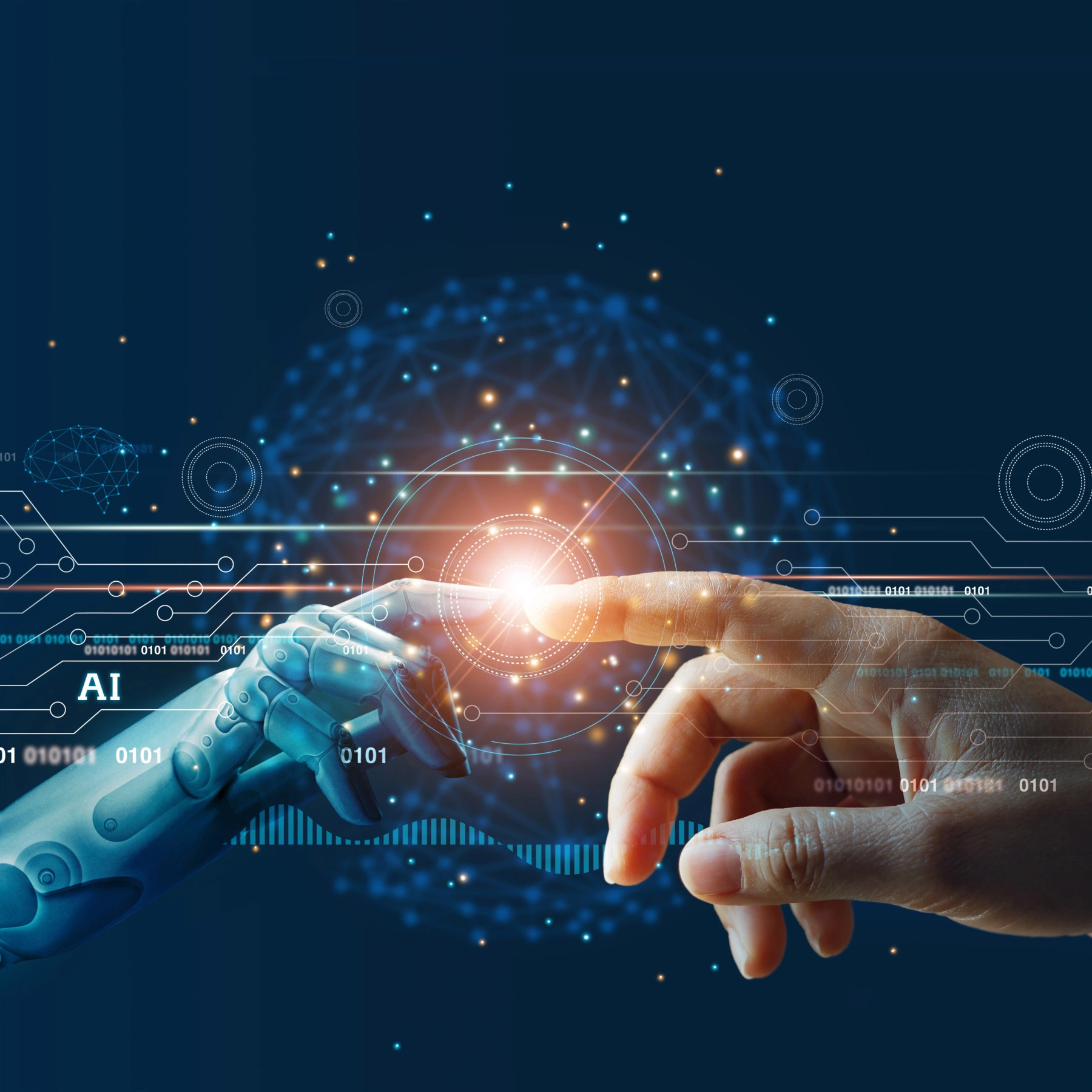
Since architecture likes to have broad connections in all sectors, let’s start with a short excursion into history. In 1996, a phenomenon appeared for the first time in the history of mankind, which today is known on a daily basis and is taken for granted. I’m talking about the fact that in 1996 the computer beat the world chess champion. If that doesn’t seem like a big deal to you, then let me explain it to you.
Garry Kasparov was the world number one chess player from 1985 to 2000. That’s a respectable 15 years of chess dominance over all other world grandmasters. It was in 1996 that he competed in six matches against an IBM supercomputer called Deep Blue at a tournament in the USA. Out of six games, Deep Blue won 3, 2 ended in draws and one game was won by Kasparov. So one can talk about the crushing defeat of humanity.
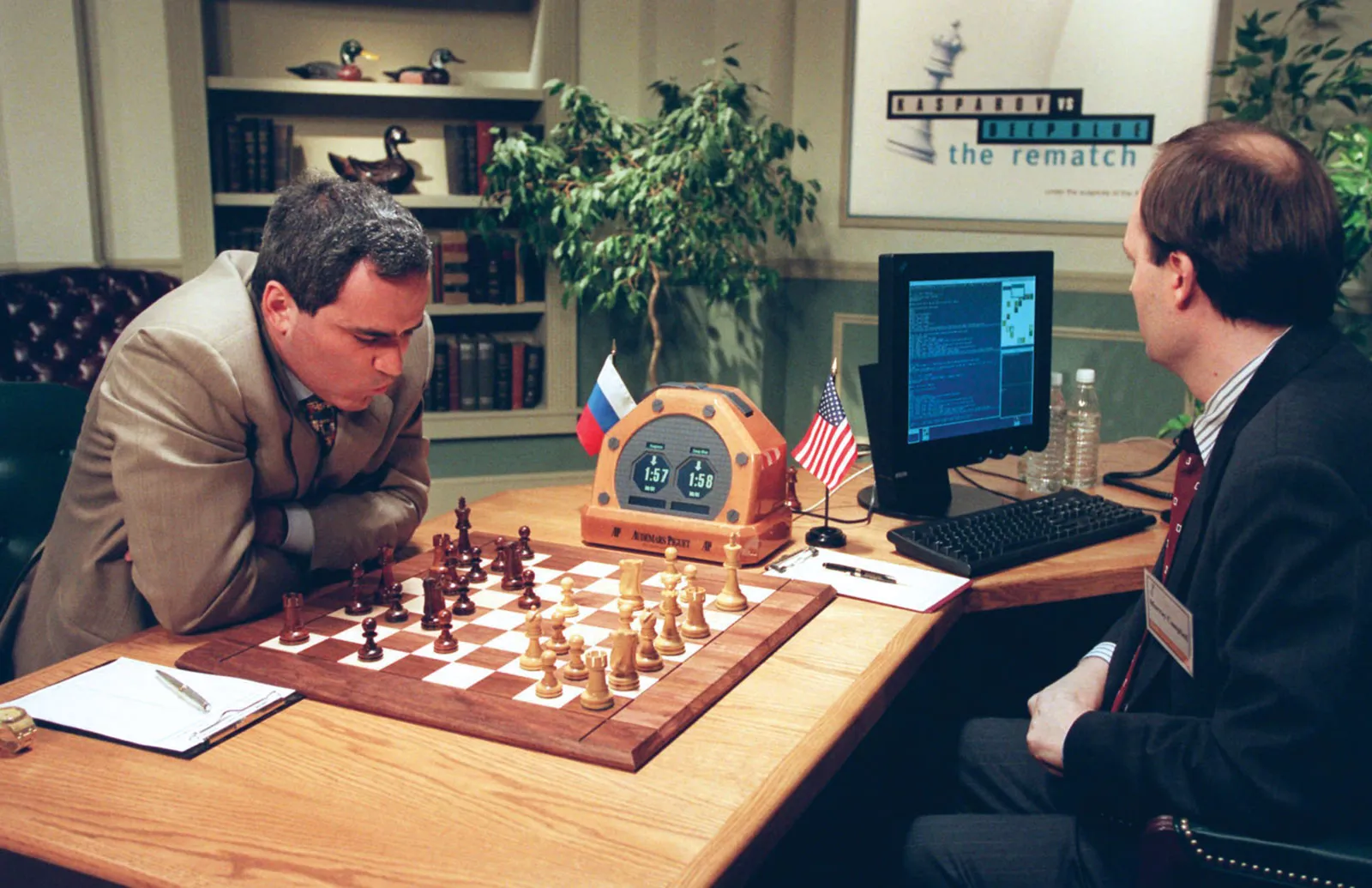
From this tipping point, it is completely standard to take the computer as an entity that will always be 2x better than humans at chess. During the championship, the commentators rely on in-depth analyzes of specific positions during the broadcasts, where, thanks to the computers, they can see dozens of forward moves in seconds. The world grandmasters enrich their strategies with the help of procedures designed by supercomputers and are able to put their opponents in a tight spot just by memorizing the moves.
It is clear that this is still a long way from chess to complex human thinking, but as an indicator it is sufficient.
Let us now consider how fast and accelerated branch computing technology is developing. Chips in computers are getting smaller, while their computing capacity is increasing many times over. In the figure below, we can compare components of roughly the same size in different years of development. From a singular transistor from the 1950s, capable of giving an ON/OFF signal, to modern graphics cards that are composed of billions of such units.
![]()
We live in a time when humanity has reached the boundary and limit of matter itself. Smaller distances would sometimes mean that the electric current would jump between two circuits on its own, just because the individual atoms are so close.
In the future, the use of so-called quantum computers is being considered, which could store information 0 and 1, i.e. ON/OFF, based on the spin of atoms, the quantum probability of the appearance of parts and similar incredibly complicated principles. that would further intensify the process.
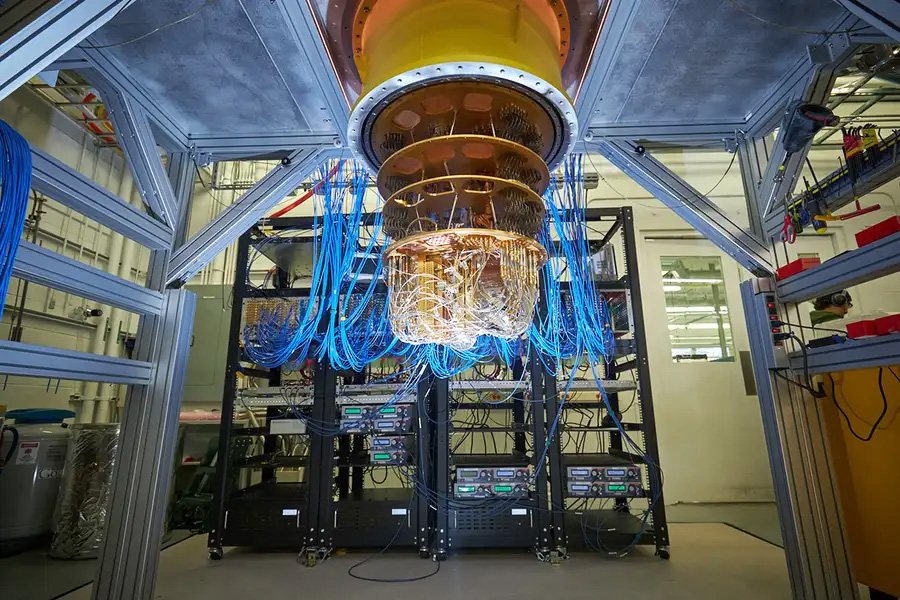
But we don’t need to hone in on physics any more, after all, our expertise lies elsewhere. I just wanted to outline the background of where today’s times really are.
Considering the computing potential and capacity of today’s computers, it is no wonder that AI is given so much space.
To process data in words, to think about the meaning of sentences, to put together really plausible and true answers, it takes a lot of performance. Today’s time can already provide that.
I don’t quite understand how so-called neural networks work exactly. But imagine it as a sequence where information flies from left to right through a complicated system of parameters (as in the picture below). The output on the right is then a specific response to the input data on the left.
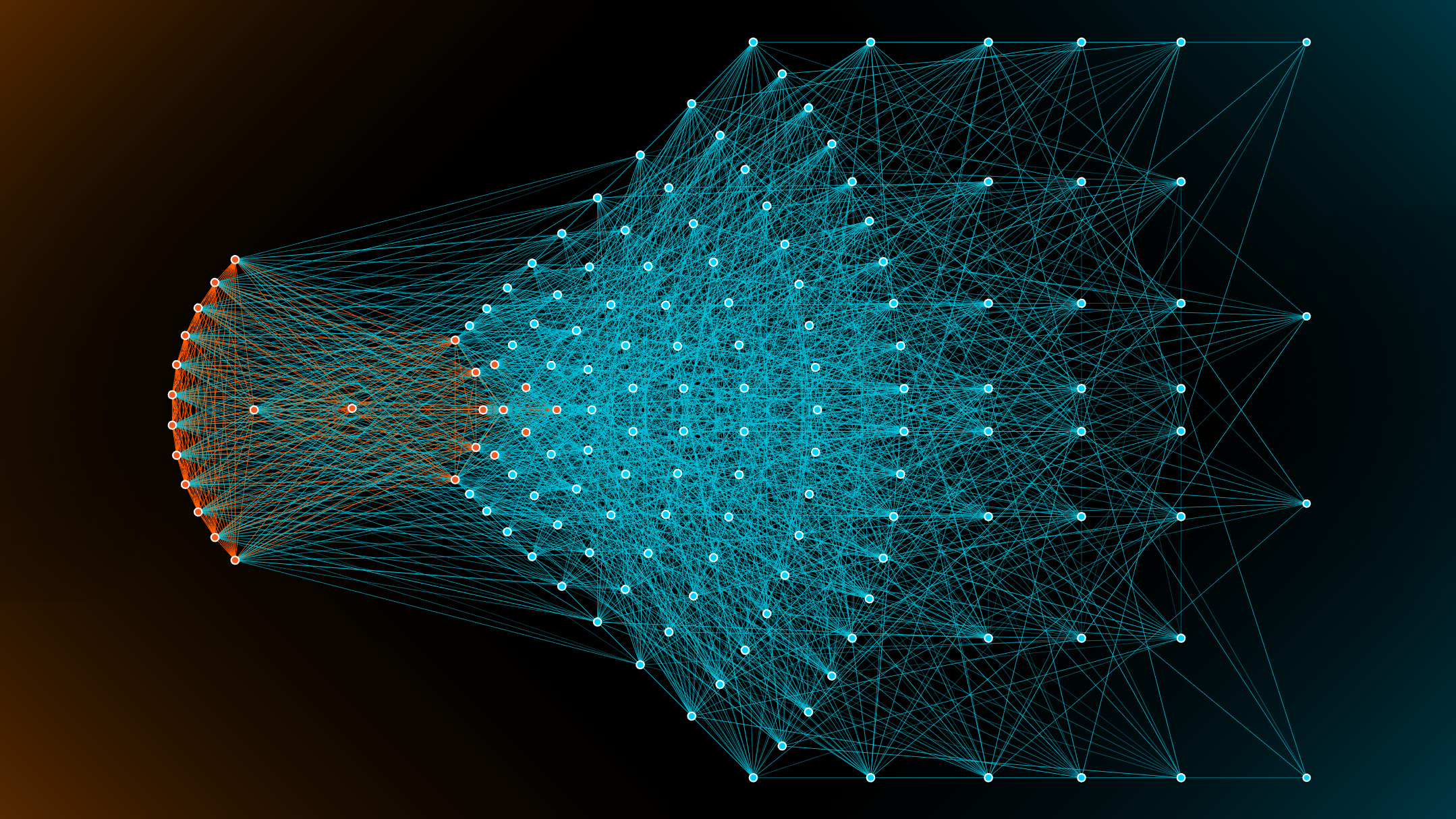
It’s incredible how far this industry has progressed in the last few years. From iPhone Siri, which is able to answer a few questions, turn on a song on your mobile and call a friend, to today’s superstar ChatGPT by OPEN AI.
Siri seems outdated and broken, skeletal and stupid compared to today’s language models. And we are still only working with text, words, sentences and information in written form. That is a very narrow spectrum of what can be done.
Let’s move from theory to practice.
Chat GPT is a so-called chatbot, namely “Generative Pre-trained Transformer”, It is a kind of language model with the label “generative language AI”
Launched in November 2022, it is today (April 2023) a real hit on the Internet. In the USA, with her help, someone graduated from law with a grade of C.
Context in architecture,
In addition to language models, we also have generative AI for image creation. This is much closer to architecture. Fortunately, the architecture itself is still too complex for AI to take over anytime soon. But sometimes it happens.
So let’s see what AI can do. I now enter ChatGPT to generate a description of the building.
“We want to design a modern villa for a family of four. Ideally, it could be by the lake, connected to the landscape of the place, two floors, mostly standard materials, i.e. white plaster, possibly concrete, wood, dark window frames, large glass areas.”
See how smart ChatGPT is. It was enough to write that she would translate the marked paragraph into English, then ask her to write it down in more detail.
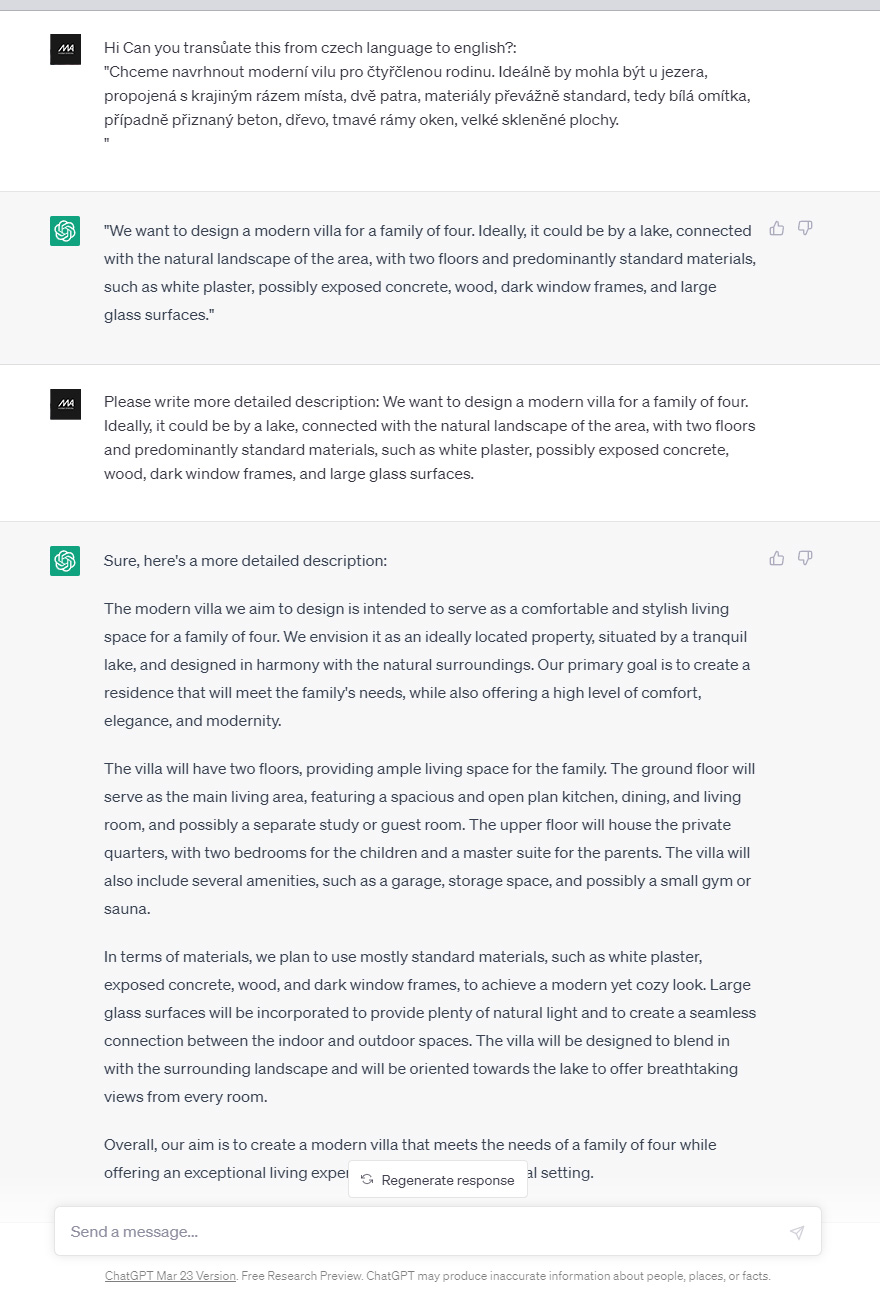
Now I will take the generated text and give it to another AI software called Midjourney AI for processing. It generates an image based on the text input. Yes, it’s that simple.
Lets look what with text input Midjourney conjures up.
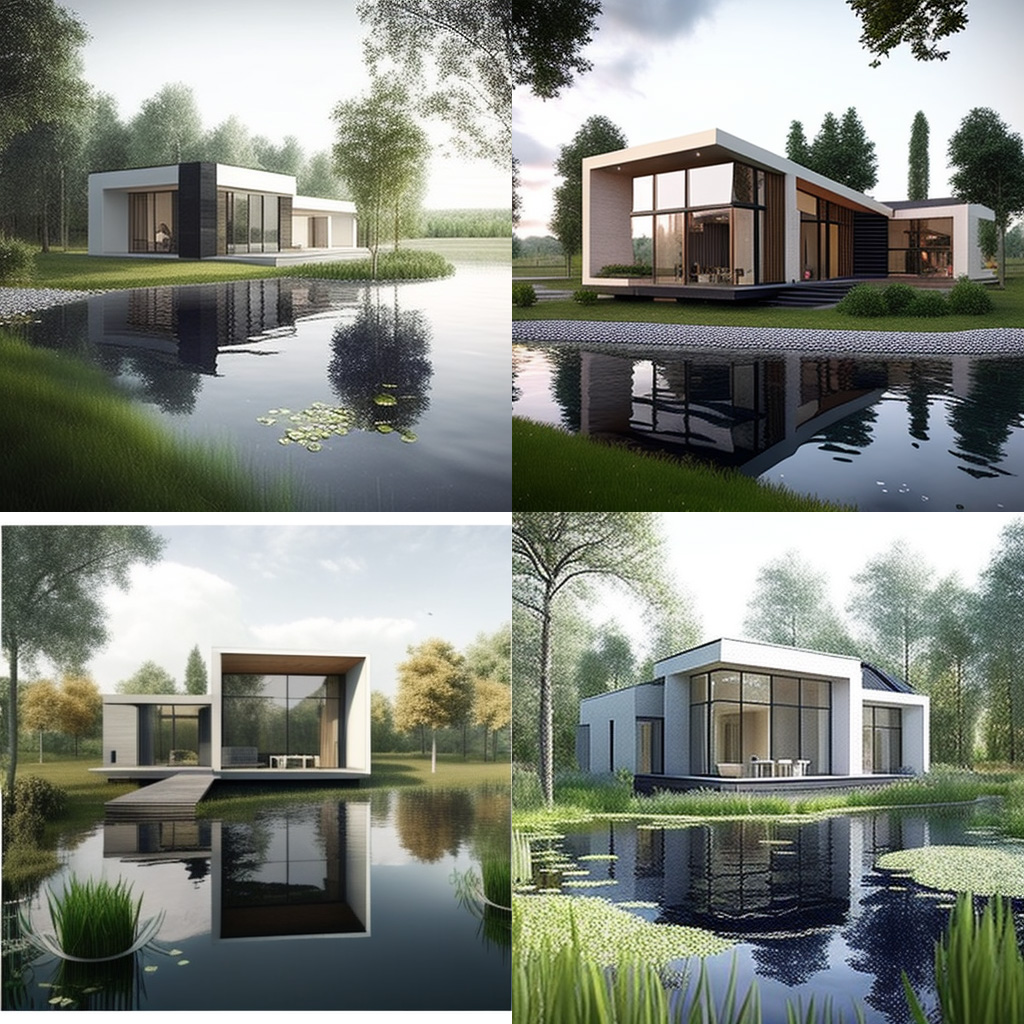
By default, Midjourney gave me 4 variants that I can continue to work with. Let’s say I want to develop the 3rd and 4th image.
I’ll just point out that it took the AI about 20 seconds to generate these 4 versions.
Now from AI we have the 3rd and 4th variants in development each in four similar versions.:
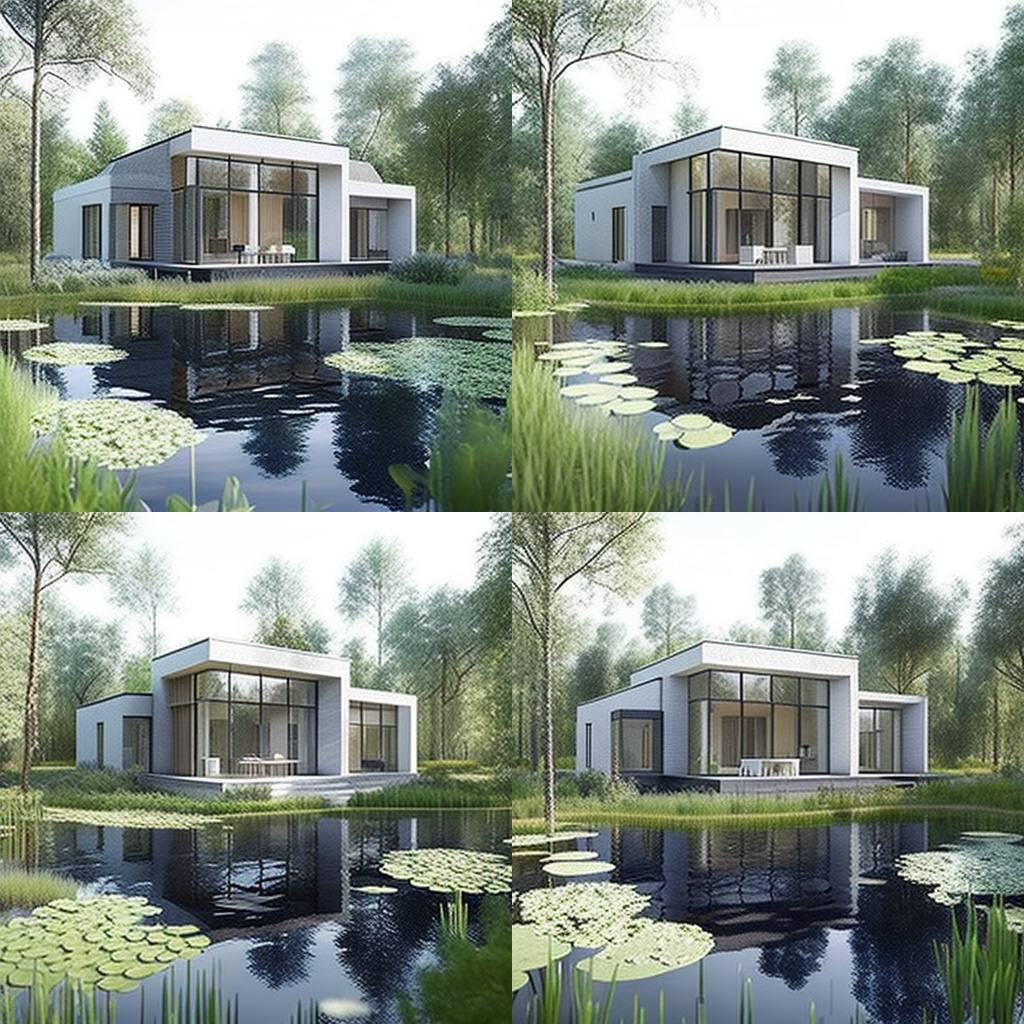
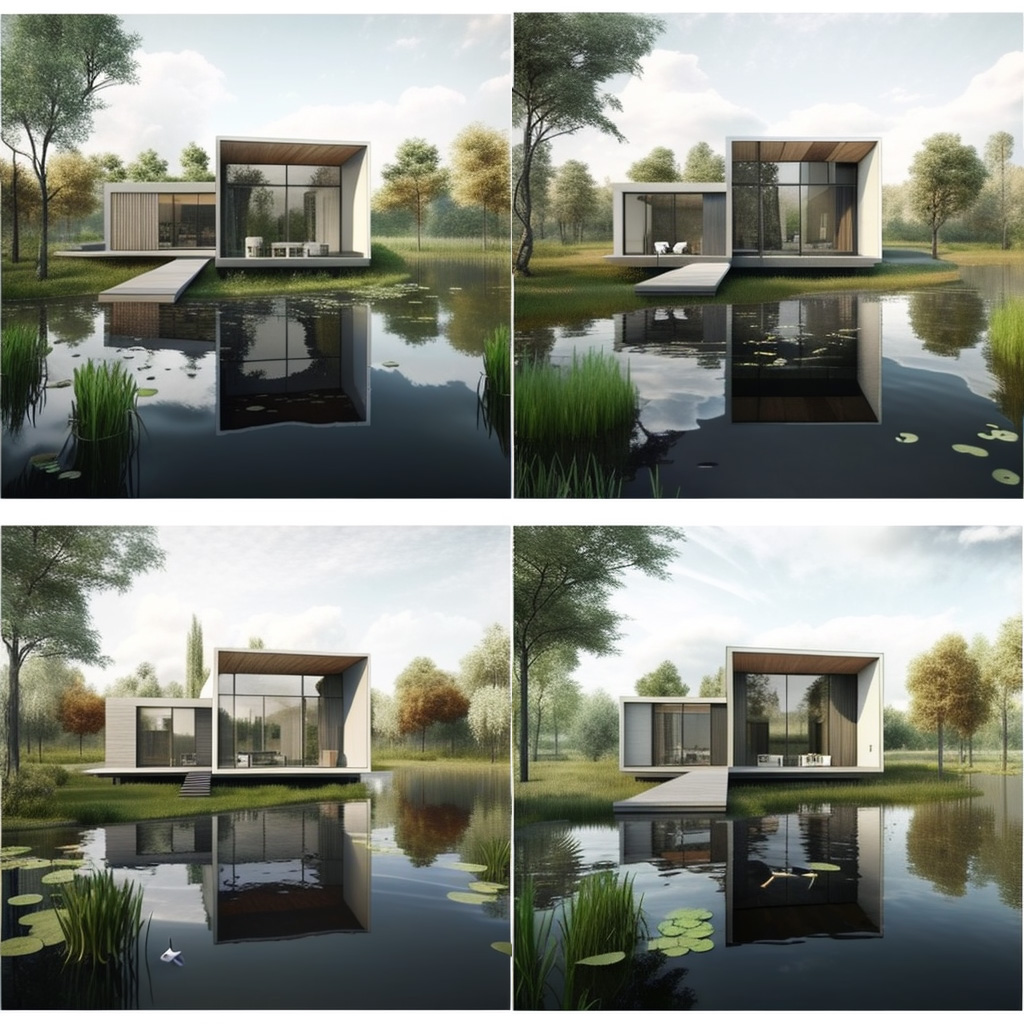
For the final output, I choose one image from each in greater detail:
Again, everything takes a matter of seconds, and you have very high-quality and very specific reference images for creation on your desk. If he is satisfied with the output, the architect can very easily be inspired in his designs.
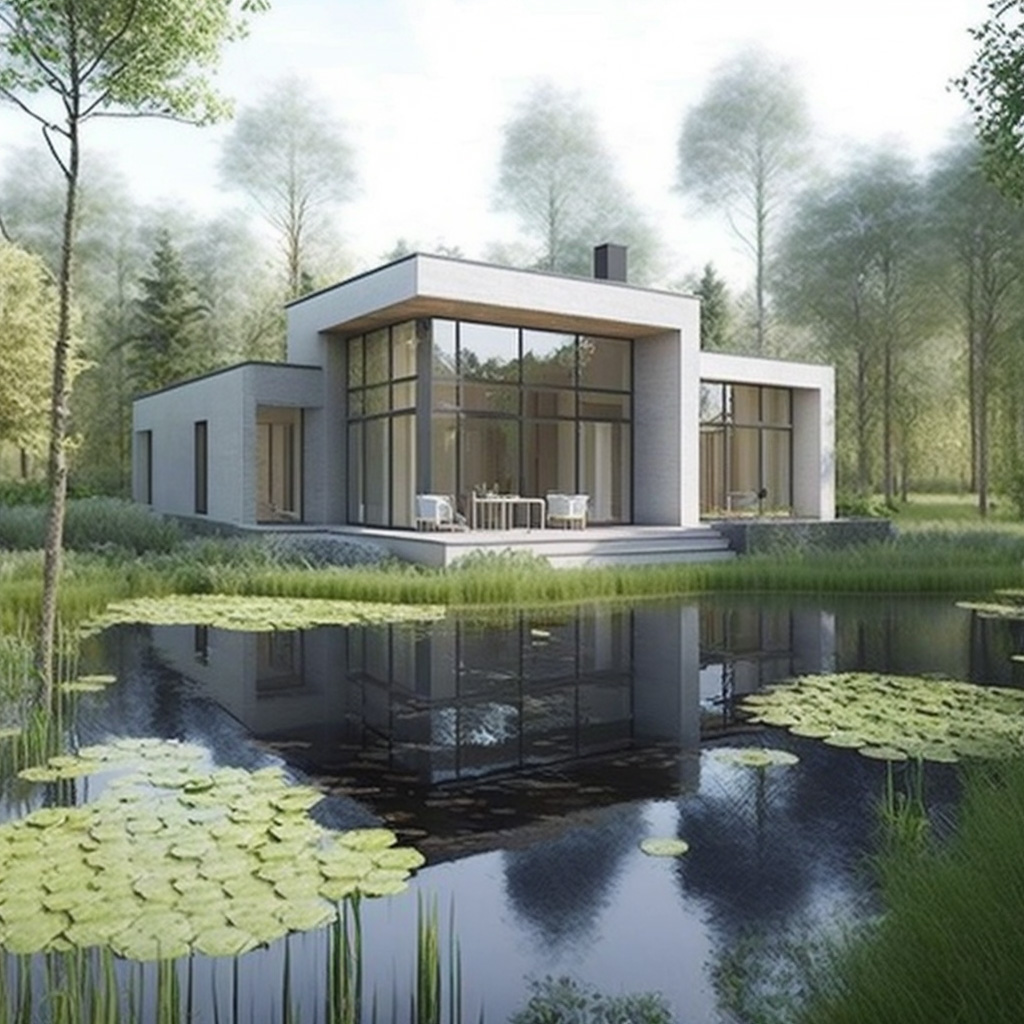
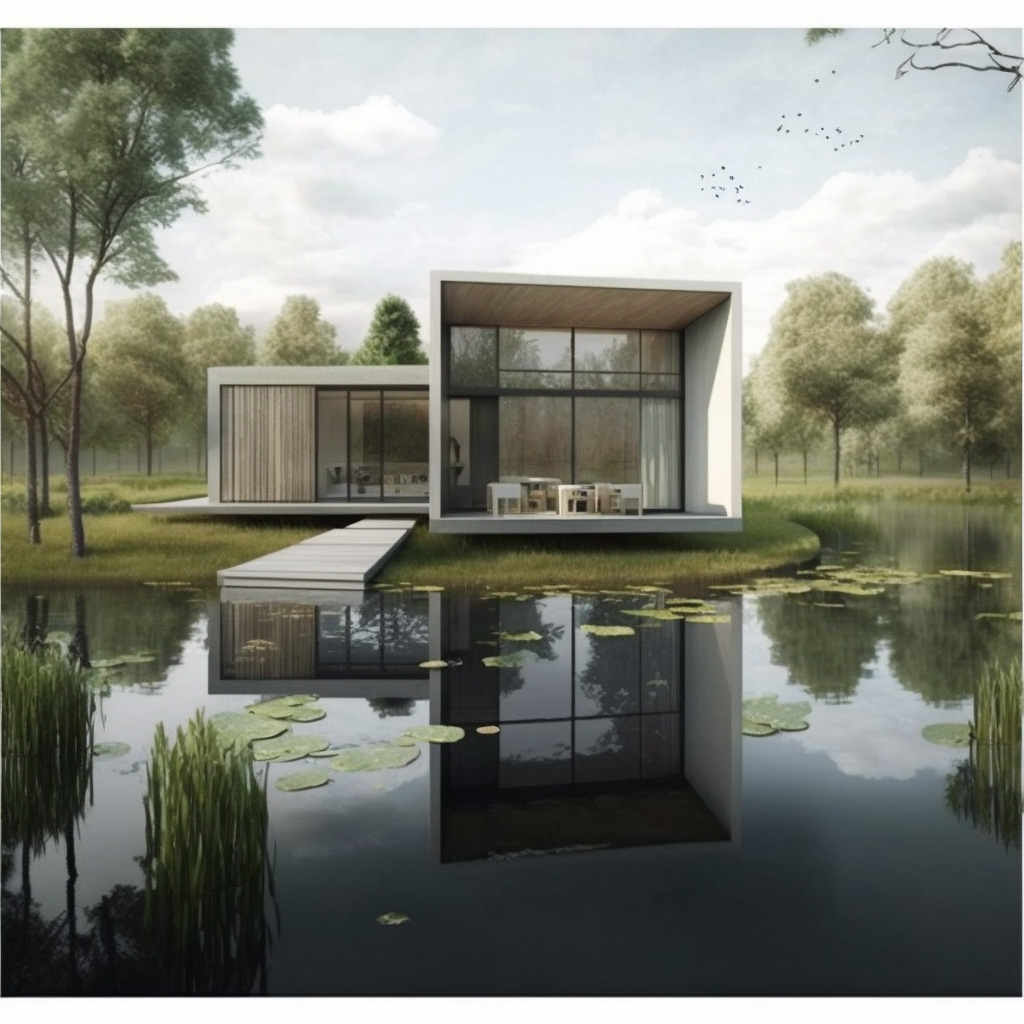
I’m not saying it’s a masterful design, but for the fact that it was completely generated by a computer, and that I only wrote that one paragraph in Czech at the beginning, it’s really incredible work..
I am very curious about where we will be in the next five years. I think I’m not far from the truth when I imagine a similar workflow when creating 3D models. You write a few sentences and the AI generates a finished 3D model, floor plan and interactive dwg in 5 variants.
Let’s expand on this reasoning a bit. Indeed, it is not far from the truth. There is already software today that will handle any geometric shape and divide it into the required rooms. All you have to do is mark the walls, move a few parameters, and the space is suddenly filled with toilets, rooms, corridors, windows, etc.
It will make the work easier and especially it will simplify the work from different variations and combinations to divide the space. This is, for example, from PlanFinder or SWAPP
But it is still only about creating a 2D floor plan. Or in the case of the aforementioned Midjourney, about the creation of 2D raster images.
But architecture is a combination of many more factors. One of the very popular approaches is the creation of 3D models and subsequent processing in BIM or other programs.
The idea that AI will be able to generate 3D models is really tempting. It would save us time with 3D modeling, searching for shapes and proportions. In the case of a new building on a flat plot of land, I don’t see many obstacles why a similar AI assistant could not exist in a few years.
However, the more input conditions and restrictions there are, the more difficult it would be for the AI to make sure the resulting proposal has a head and a tail. We can see it in the pictures. Sometimes there are mistakes that you would never make. Oppositely placed left and right eye, shadow texture with a different material color than the rest of the building. Instead of a bird in the sky, some strange potato… These are details, but that’s what the designs would be about. I think that the AI “shot” at the beginning could generate several variants roughly, and a person would then work with them, correct and refine them. This would also speed up the whole process and make work easier. It’s definitely an interesting direction, and I think we’ll be hearing about similar tools across industries soon.
Concept artists, designers and creative artists are already entering the work field at Midjourny. It is unbelievable how many percent of their work can now stand, and they are rightfully speaking out because they are in danger of losing their jobs. It is only a matter of time before a similar problem affects other industries. However, I hope that the architecture will go last. After all, this is a field so complex and sophisticated that a person will be needed in the design phase for a long time to come. Not to mention contact with clients, authorities and other interested parties.
There is always a summary at the end, but I think this article shouldn’t even have a clear ending. After all, AI is such a new and interesting topic that a look into the future is more appropriate here. It makes me feel like oil gushes from an inhospitable plain, or like a spring welling up from the ground. It’s fresh, it needs to be processed quickly and something done with it. Well, that’s how new things with AI elements are pouring into the world today, and all we have to do is wait a while and see from a distance what they really cost.
It will still be a long time before AI takes over architecture. There are simply too many factors that a person has to take into account here.